Extraterrestrials in Yellowstone National Park
Millions of people visit Yellowstone every year to view its majestic sights and wild animals, BUT they often overlook the billions of microscopic creatures under their feet. Scientists from all over the world are yearning to observe Yellowstone’s tiny extreme life forms called extremophiles, but why? These microbes may offer clues to help answer some of biggest scientific questions, including “Is there life elsewhere in the universe?”
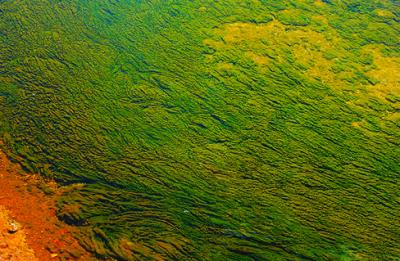
The rainbows of microbial life swirling in and around the hot springs of Yellowstone have already yielded the secret for how to better amplify DNA in the laboratory, which helps solve crimes and identify crime victims. Scientists are actively pursuing how these extremophiles might also be a source for alternative fuels such as hydrogen, and a means of improving medical cures for ailments such as cancer. Yet, it’s Yellowstone’s connection to astrobiology that may be most surprising to the public.
The field of astrobiology is attempting to research three fundamental questions: how did life begin and evolve; is there life elsewhere in the universe; and what is the future of life on Earth, and beyond? NASA researchers are studying Yellowstone’s microbes because scientists think they might resemble some of the first life on Earth. These microbes can help us understand how life started on our planet and how it might exist on other planets.
What we consider as being extreme on Earth might be similar to what is normal on other planets. Therefore, many scientists think that if we discover life elsewhere in the universe it may resemble the organisms living in Earth’s most extreme environments, not the little green men shown in cartoons and movies. Yellowstone is a particularly rich environment in which to explore extreme life because it is home to half (more than 10,000) of the world’s hydrothermal features. Yellowstone’s thermal features also have a wide range of pHs, temperatures, and chemical compositions that yield a diversity of microbes that we are just beginning to discover.

In order to research the fundamental questions of astrobiology, the NASA Astrobiology Institute (NAI) was created. The Montana State University Astrobiology Biogeocatalysis Research Center (ABRC) is one of 14 teams at universities and science centers around the country that comprise NAI. The other teams are from institutions such as NASA Goddard Space Flight Center, the Jet Propulsion Laboratory, Massachusetts Institute of Technology, and Pennsylvania State University. “I think people are often really surprised to find a NASA-funded astrobiology center so far from any NASA research or spaceflight facility. Yet, we have the incredible living Astrobiology laboratory of Yellowstone National Park in our backyard,” said John Peters, the head of ABRC.
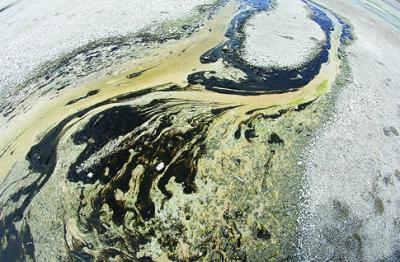
ABRC tries to bridge the gap between scientists and the public through education and outreach. They bring teachers from around the world to Yellowstone, have created lesson plans for schools, activities for libraries, and even a tourists’ guide to NASA astrobiology research in Yellowstone called “Science of the Springs.”
To learn more, download “Science of the Springs,” Montana State University’s guide book to NASA research in Yellowstone at abrc.montana.edu/outreach/scienceofthesprings.html or visit abrc.montana.edu or astrobiology.nasa.gov/nai/.
Recently it was discovered that there are several methane plumes streaming out of the surface of Mars. Methane is an organic molecule that on Earth is produced almost exclusively by living microorganisms called methanogens. Scientists are vigorously debating whether or not the methane plumes on Mars are evidence for life there, or if the methane could be produced without life. Methanogens are common in many geothermal springs in Yellowstone, including Old Faithful. Scientists believe that methanogens are good candidates for life on Mars or on Jupiter’s moon Europa and thus are actively studying them.

Microbial life exists in and around thermal features throughout Yellowstone—even those that are at near boiling temperatures or as acidic as battery acid. Yellowstone is an amazing place to visit for anyone interested in microbes because it is one of the few places in the world where you can see an amazing diversity of microbes without a microscope. Large microbial mats and filaments with distinct white, yellow, green, pink, orange, brown, and black colors are visible to the naked eye. Scientists are just beginning to understand why the colors are produced and how, information which could be useful for interpreting colors on the surfaces of other planets and whether these might be associated with life.
Famous for its vividly colored rainbow-like pool, Grand Prismatic Spring is the largest hot spring in the United States and one of the most photographed features in Yellowstone. In the channels around Grand Prismatic there are mats of photosynthetic cyanobacteria that are usually orange and occasionally green. Photosynthetic microorganisms similar to the ones at Grand Prismatic may have been largely responsible for making Earth’s early atmosphere oxygen-rich. They are also some of the oldest fossilized organisms found on Earth and have been estimated to have existed greater than 3 billion years ago. Studying these fossils helps researchers understand photosynthesis, the ancient microbial world, and how life has evolved on Earth.
Microbial life exists in and around thermal features throughout Yellowstone—even those that are at near boiling temperatures or as acidic as battery acid. Yellowstone is an amazing place to visit for anyone interested in microbes because it is one of the few places in the world where you can see an amazing diversity of microbes without a microscope. Large microbial mats and filaments with distinct white, yellow, green, pink, orange, brown, and black colors are visible to the naked eye. Scientists are just beginning to understand why the colors are produced and how, information which could be useful for interpreting colors on the surfaces of other planets and whether these might be associated with life.
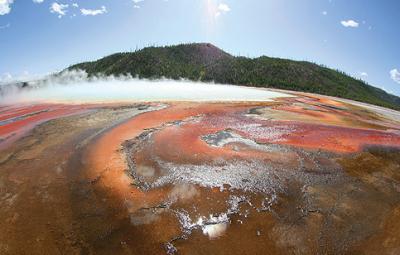
Millions of microbes thrive in Mammoth Hot Springs and give the mound its distinct colors. Over time, the microbes can become entombed in calcium carbonate (limestone) deposited by the thermal water. The unique chemical impressions left by these microbial fossils could help scientists identify signatures of life beyond Earth. Scientists are also comparing them to 350 million-year-old rock deposits in Australia that contain similar fossils for clues as to what earlier forms of life on Earth looked like. Such studies will help scientists unlock the mystery of how life originated on Earth and learn what to look for on other planets and moons when searching for life.
~ Jamie Cornish is the Science Outreach and Education Specialist at Montana State University’s Extended University. She has served as both the Director of Education and Marketing at the Museum of the Rockies in Bozeman. Before moving to Montana, Jamie worked in New York City at Sesame Workshop conducting audience research on programs such as Sesame Street and Dragon Tales. In addition, Jamie has worked for Discover Magazine developing publicity and marketing strategies, and worked as a consultant for Nickelodeon.









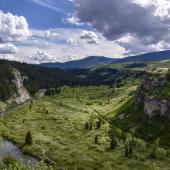
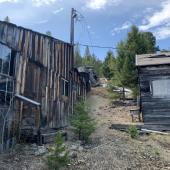

Leave a Comment Here